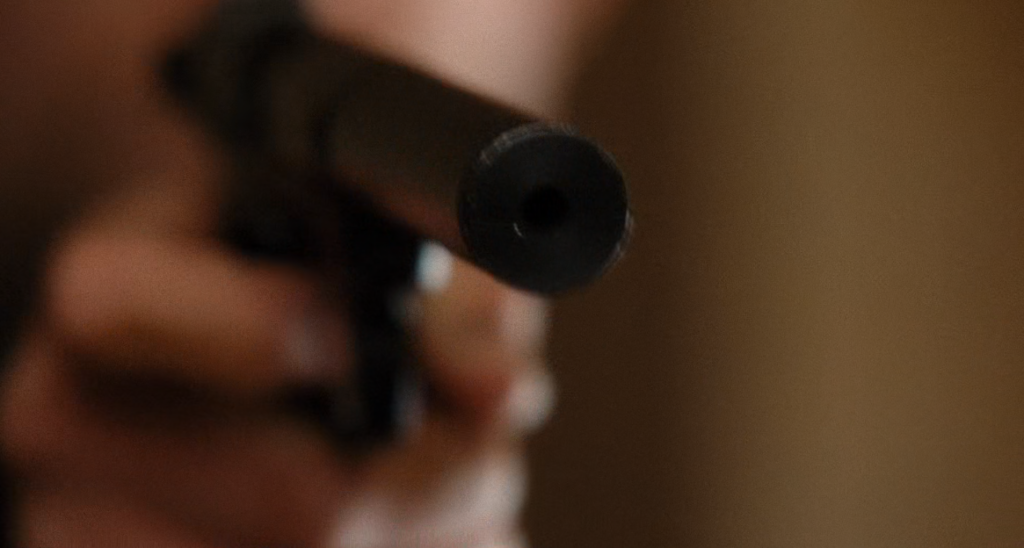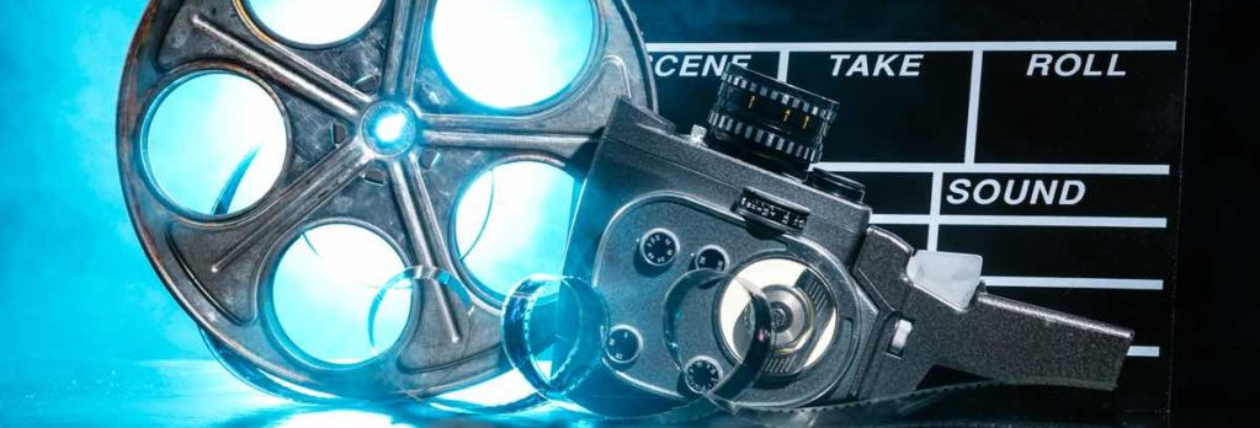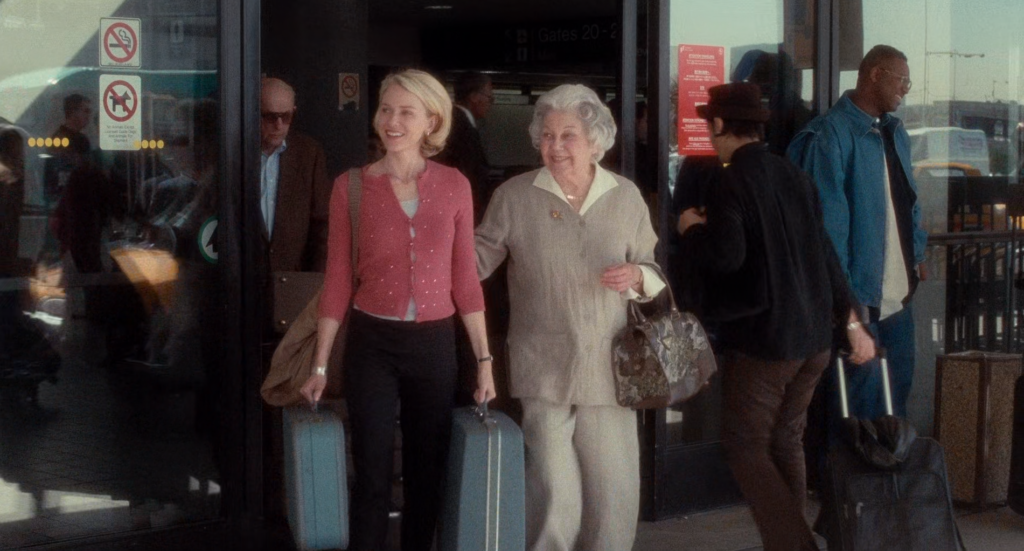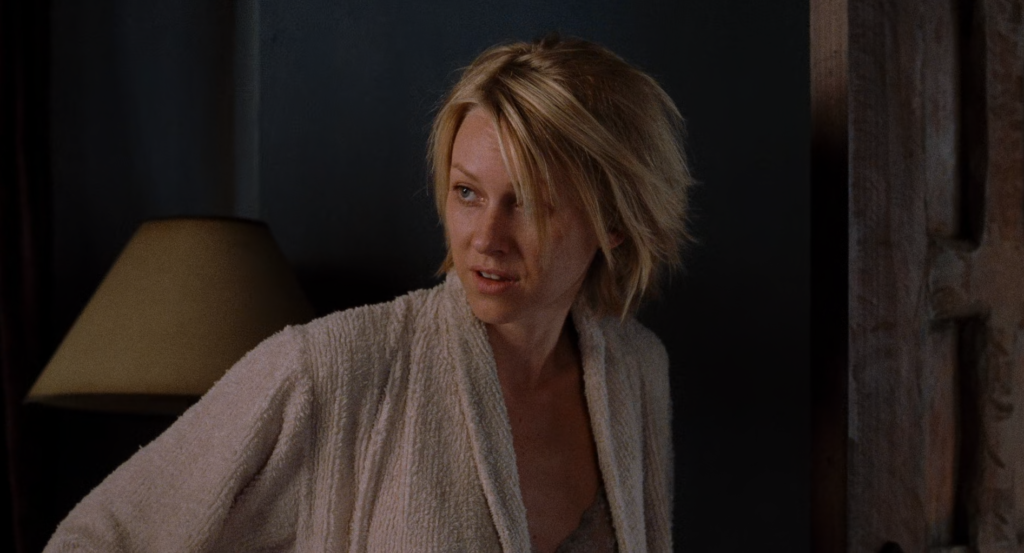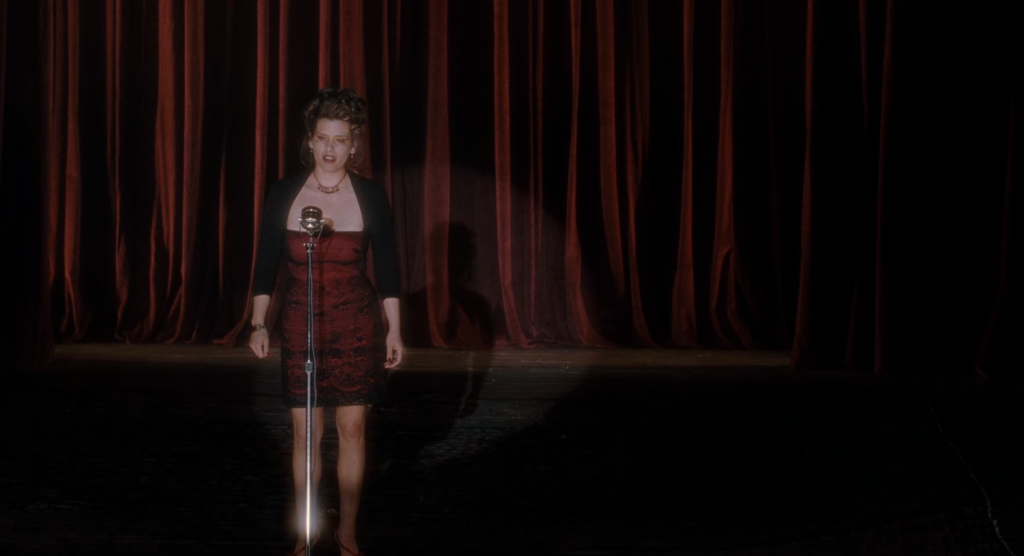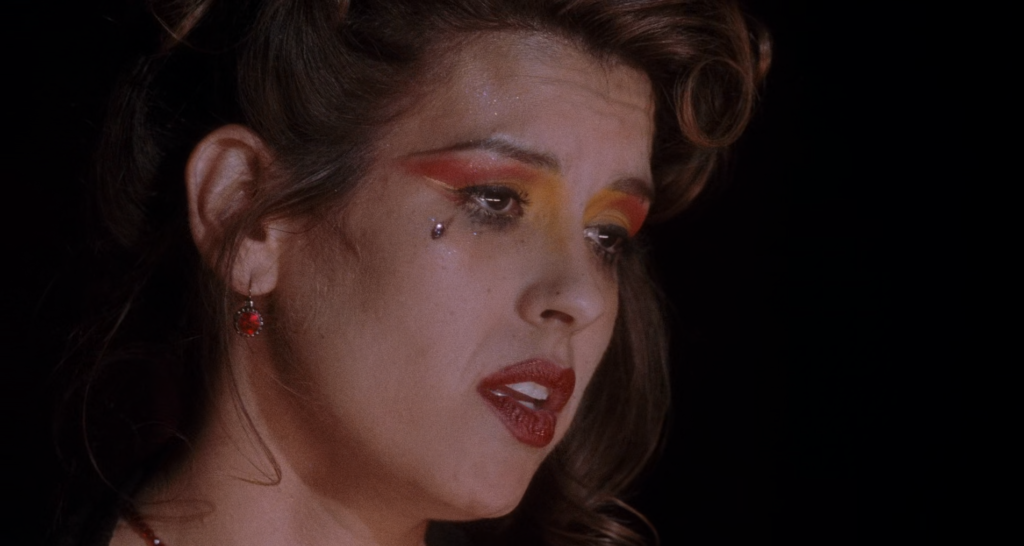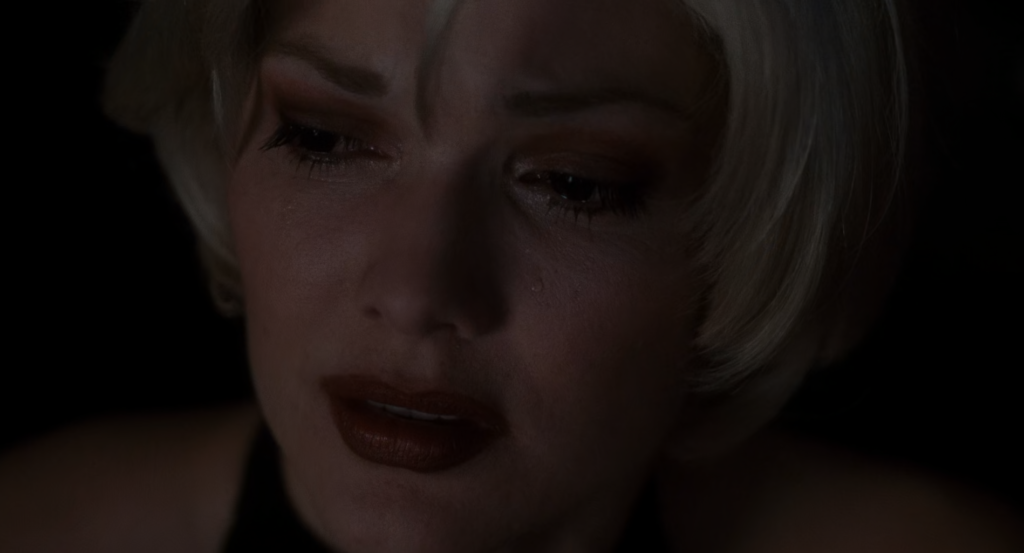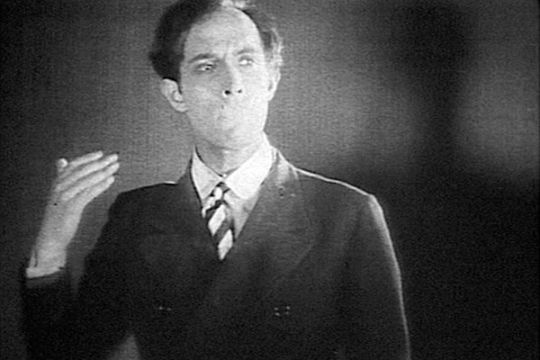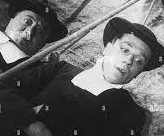Technical Elements
Cinematography – The lighting and composition in this scene adds to the surrealist and mysterious tone of the sequence. The character of the ‘cowboy’ is one that isn’t explained, so the shadow casted over his eyes eludes to his confusing and eerie character. Additionally the medium close up allows the spectator to be threatened by his presence, as he feels invasive and up-close, adding to the tension of the scene.
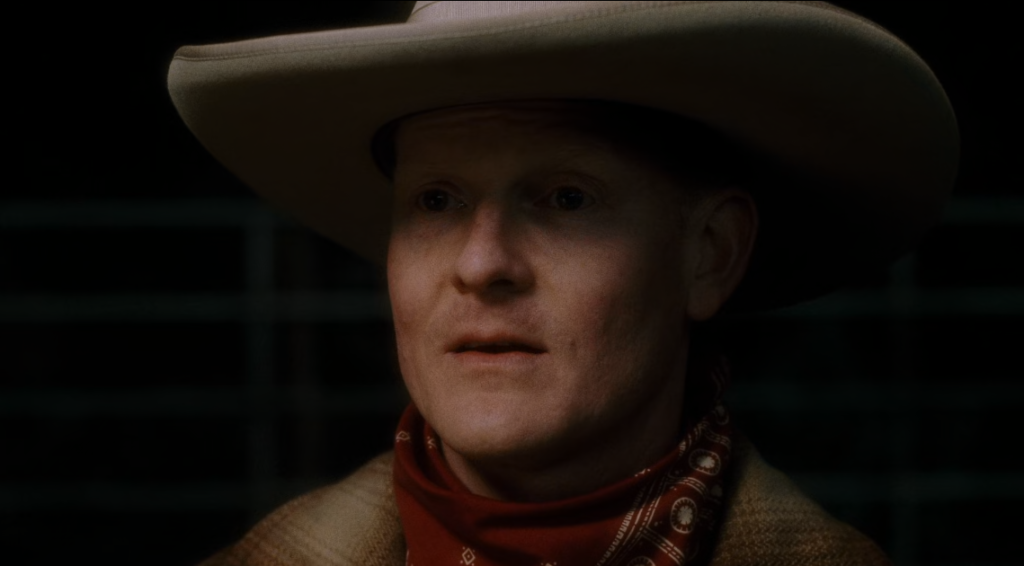
Mise-en-scene – Lynch portrays the mysterious and surrealist figure of power in the film industry through the dark and surrealists nature of his surroundings. Lynch uses curtains to symbolise mystery, as its unsure what could be behind them. The office is bare and dismal, almost sci-fi, indicating that this is a heightened interpretation of those industry CEO’s that are unseen but are all-powerful and threatening.
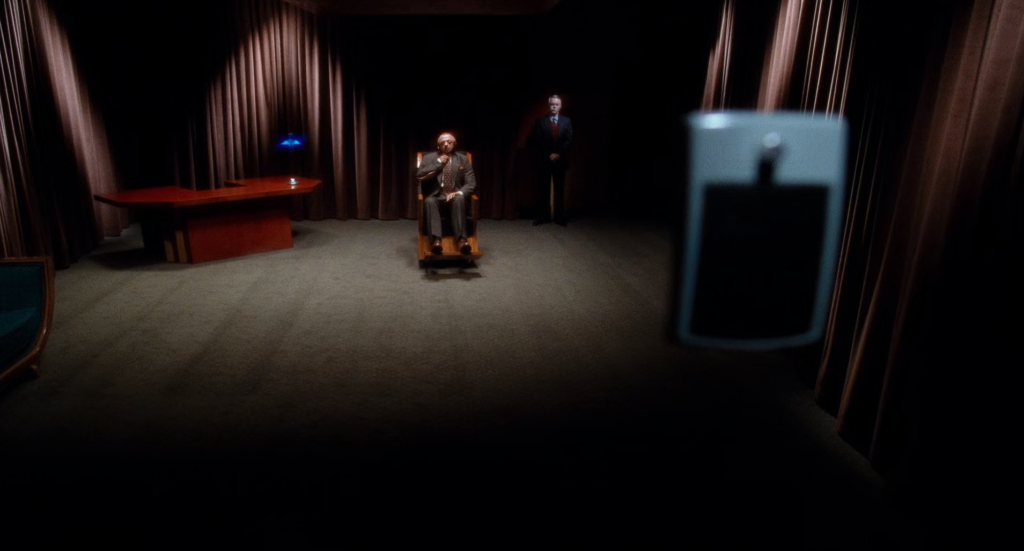
Sound – Lynch uses a contrapuntive score in this scene to highlight the absurdity of how this situation is handled. The score is upbeat and positive, whilst the situation is awkward and hard-hitting. The music leads the spectator to not expect this turn of events, and as a result ends up just as shocked as the director/husband.


Editing – The way in which these close ups are right before and after the shots fired is effective in emphasizing the heightened performance in the scene. The spectator is led to be shocked at the gun and even more shocked t its effect on the victims hair, the close ups being sandwiched with a long shot just emphasises the gruesome nature of the scene more.
